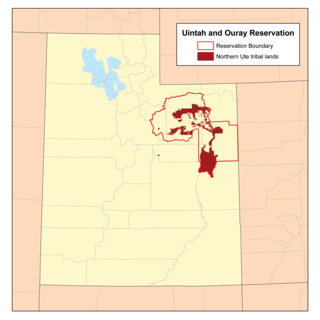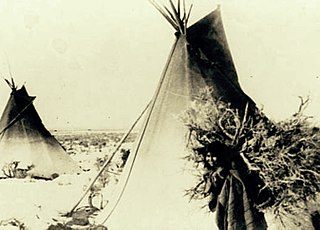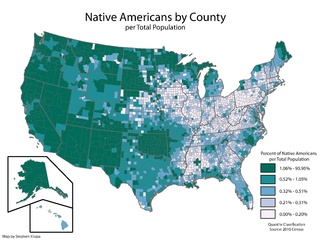
Millard County is a county in the U.S. state of Utah. As of the 2020 United States Census, the population was 12,975. Its county seat is Fillmore, and the largest city is Delta.

Kanosh is a town in Millard County, Utah, United States. The population was 474 at the 2010 census.

The Southern Paiute people are a tribe of Native Americans who have lived in the Colorado River basin of southern Nevada, northern Arizona, and southern Utah. Bands of Southern Paiute live in scattered locations throughout this territory and have been granted federal recognition on several reservations. Southern Paiute's traditionally spoke Colorado River Numic, which is now a critically endangered language of the Numic branch of the Uto-Aztecan language family, and is mutually intelligible with Ute. The term Paiute comes from paa Ute meaning water Ute, and refers to their preference for living near water sources. Before European colonization they practiced springtime, floodplain farming with reservoirs and irrigation ditches for corn, squash, melons, gourds, sunflowers, beans and wheat.

Ute are the indigenous, or Native American people, of the Ute tribe and culture among the Indigenous peoples of the Great Basin. They had lived in sovereignty for several hundred years in the regions of present-day Utah and Colorado.
Chief Walkara was a Shoshone leader of the Utah Indians known as the Timpanogo and Sanpete Band. It is not completely clear what cultural group the Utah or Timpanogo Indians belonged to, but they are listed as Shoshone. He had a reputation as a diplomat, horseman and warrior, and a military leader of raiding parties, and in the Wakara War.

The Black Hawk War, or Black Hawk's War, is the name of the estimated 150 battles, skirmishes, raids, and military engagements taking place from 1865 to 1872, primarily between Mormon settlers in Sanpete County, Sevier County and other parts of central and southern Utah, and members of 16 Ute, Southern Paiute, Apache and Navajo tribes, led by a local Ute war chief, Antonga Black Hawk. The conflict resulted in the abandonment of some settlements and hindered Mormon expansion in the region.

The Ute Indian Tribe of the Uinta and Ouray Reservation is a federally recognized tribe of Indians in northeastern Utah, United States. Three bands of Utes comprise the Ute Indian Tribe: the Whiteriver Band, the Uncompahgre Band and the Uintah Band. The Tribe has a membership of more than three thousand individuals, with over half living on the Uintah and Ouray Indian Reservation. The Ute Indian Tribe operates its own tribal government and oversees approximately 1.3 million acres of trust land which contains significant oil and gas deposits.

Kanosh was a nineteenth-century leader of the Pahvant band of the Ute Indians of what is now central Utah having succeeded the more belligerent Chuick as principal chief. His band had "a major camp at Corn Creek." He is remembered for having been "friendly toward early Mormon Pioneer settlers."

The Shivwits Band of Paiutes is a sovereign, federally recognized tribe located in southwestern Utah. The Shivwits Band is one of five Bands comprising the inter-Tribal government of the Paiute Indian Tribe of Utah.

The Timpanogos are a tribe of Native Americans who inhabited a large part of central Utah, in particular, the area from Utah Lake east to the Uinta Mountains and south into present-day Sanpete County.

The Sebastian Indian Reservation (1853-1864), more commonly known as the Tejon Indian Reservation, was formerly at the southwestern corner of the San Joaquin Valley in the Tehachapi Mountains, in southern central California.

The Paiute Indian Tribe of Utah is a federally recognized tribe of Southern Paiute and Ute Indians in southwestern Utah.

The Pahvant or Pahvants were a band of Ute people that lived in present-day Utah. Called the "Water People", they fished and hunted waterfowl. They were also farmers and hunter-gatherers. In the 18th century they were known to be friendly and attentive, but after a chief's father was killed by emigrating white settlers, a group of Pahvant Utes killed John Williams Gunnison and seven of his men during his exploration of the area. The bodies of water of their homeland were dried up after Mormons had diverted the water for irrigation. Having intermarried with the Paiutes, they were absorbed into the Paiute Indian Tribe of Utah and relocated to reservations.
Hatton, formerly Petersburg, is an unincorporated community and near-ghost town in Millard County, Utah, United States. It lies at an elevation of 4,826 feet.
Chalk Creek is a stream in Millard County, Utah, United States.
Corn Creek, also called Kanosh Creek, is a stream in Millard County, Utah. Its mouth is located in the Pahvant Valley. Its source is at the confluence of East Fork Corn Creek and West Fork Corn Creek in the Pahvant Range.

The San Pitch Utes were members of a band of Ute people that lived in the Sanpete Valley and Sevier River Valley and along the San Pitch River. They may have originally been Shoshonean, and were generally considered as part of the Timpanogos.

Indigenous peoples have lived in the area now known as the state of Utah for thousands of years. Today they are divided into five main groups: Utes, Goshutes, Paiutes, Shoshone, and Navajo. Each occupies a different region within the state, many of which regions extend across borders into other states. In the 2010 census, there were a total of 32,927 American Indian and Alaska Natives living within the state, which totaled to 1.19% of the total population of Utah.

The Seuvarits Utes are a band of the Northern Ute tribe of Native Americans that traditionally inhabited the area surrounding present-day Moab, Utah, near the Grand River and the Green River. The Seuvarits were among the Ute bands that were involved in the Black Hawk War. The Seuvarits and other Ute bands were eventually relocated onto reservations by the United States government after their population severely declined after exposure to disease and war during the latter half of the 19th century.

Nicaagat, also known as Chief, Captain and Ute Jack and Green Leaf. A Ute warrior and subchief, he led a Ute war party against the United States Army when it crossed Milk Creek onto the Ute reservation, which triggered the Battle of Milk Creek. Prior to the conflict, he had traveled to meet up with Major Thomas Tipton Thornburgh to learn of his intentions and warn him that crossing the Milk Creek onto the White River Ute reservation would be seen as an invasion and an act of war. When the army entered the reservation, a shooter from Nicaagat's band shot and killed Thornburgh.














